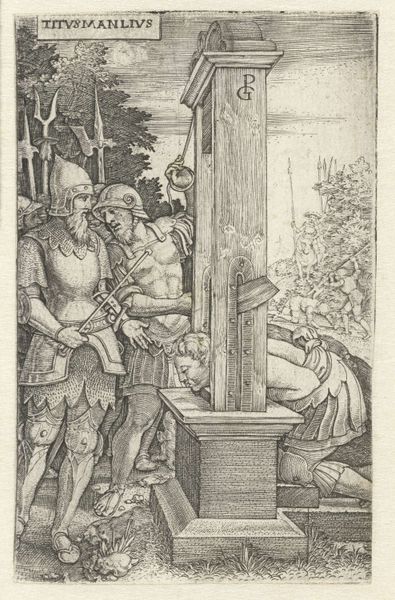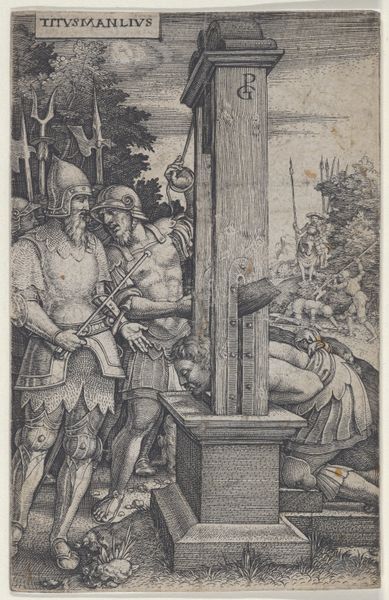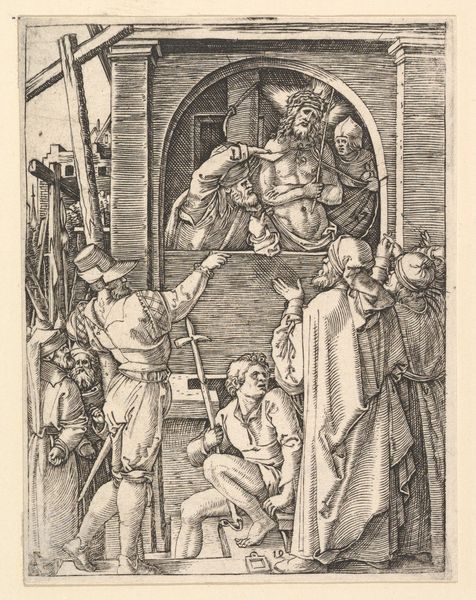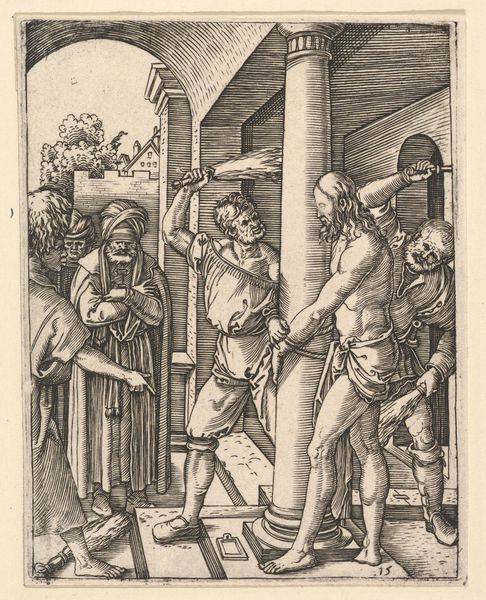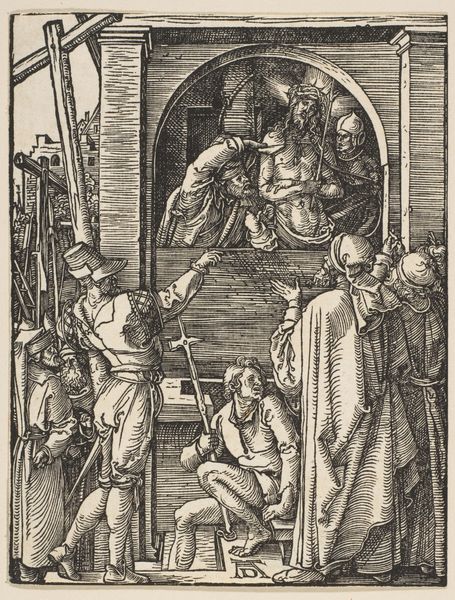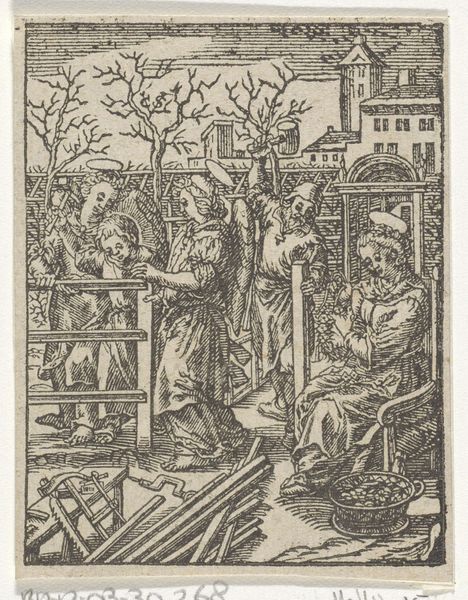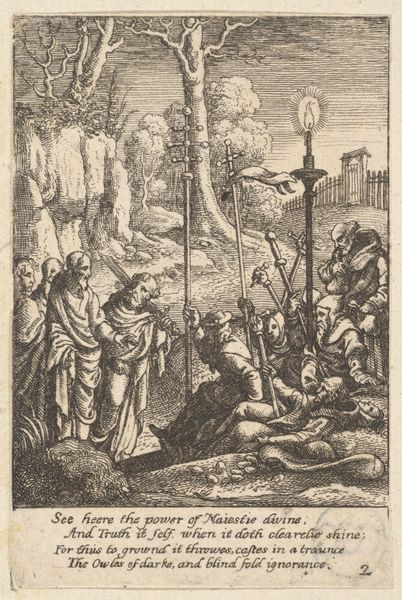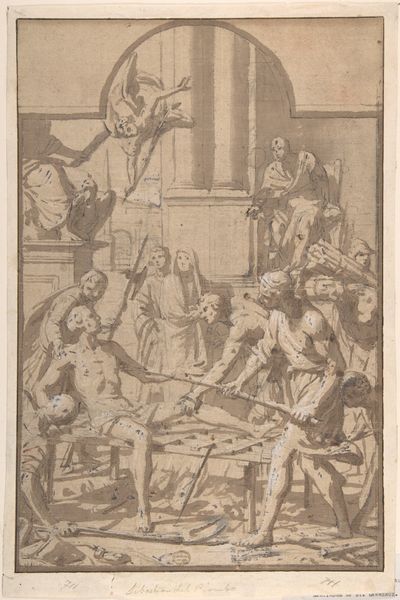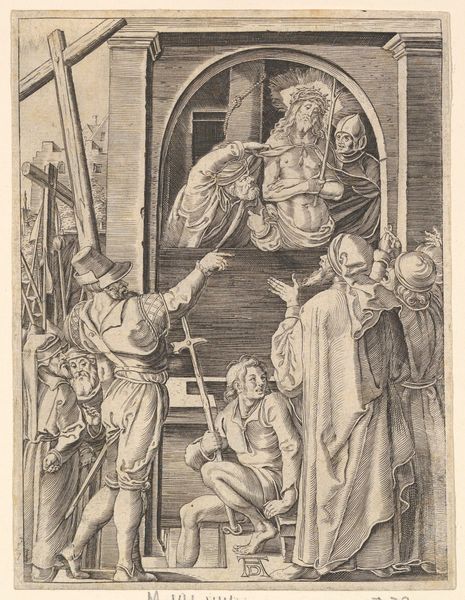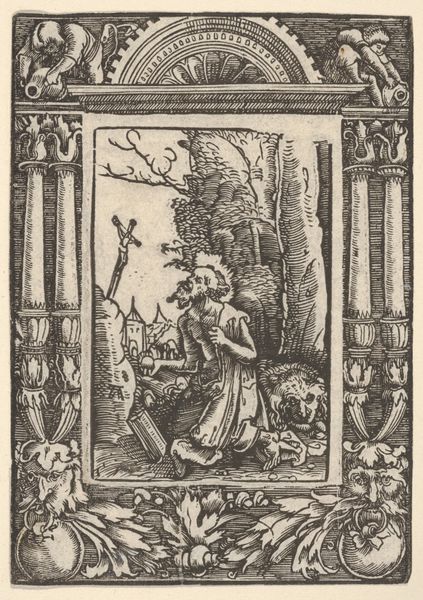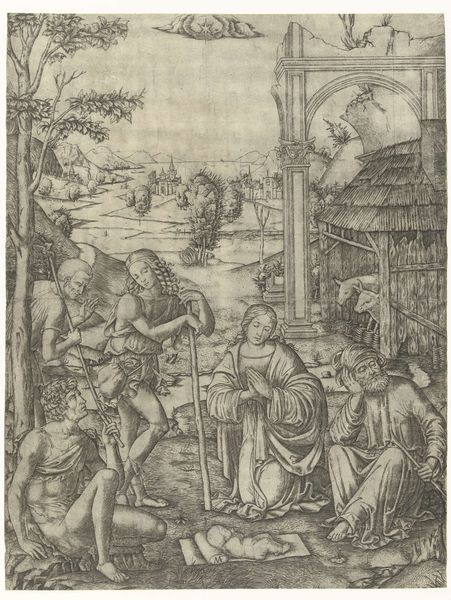
drawing, print, engraving
#
drawing
# print
#
soldier
#
men
#
history-painting
#
engraving
Dimensions: Sheet: 4 9/16 × 2 15/16 in. (11.6 × 7.4 cm)
Copyright: Public Domain
Editor: This is Georg Pencz's "Titus Manlius, from 'Roman Heroes'," an engraving from 1535. It's a rather stark image – very graphic. The contrast between light and shadow creates a very dramatic feel, even though it's such a small work. What jumps out at you? Curator: The severity of the composition is quite striking. Note the rigid verticality of the execution device bisecting the scene, acting as a brutal focal point. Pencz has used the graphic nature of engraving to amplify the textural contrasts – the smooth skin against the rough wood. The receding landscape is secondary, an orthogonally-governed backdrop reinforcing the stoicism of the foreground. What is the conceptual architecture underpinning this depiction of execution? Editor: So, less about what's happening, and more about how Pencz is showing it? The vertical lines you mention – does that rigidity convey something specific about the theme, say, law and order? Curator: Precisely. The scene itself is secondary to its formal presentation. Consider the artist's use of light; how does it sculpt form and guide the viewer's eye through the brutal landscape? Is the contrast between areas of intense light and deep shadow emotionally manipulative? Editor: It definitely makes it more intense – maybe trying to make a moral point. You’re saying to look closely at lines, light, shadow to appreciate what the artist does. It’s not *just* about the guy getting beheaded? Curator: Precisely. Dismissing such works as merely 'historical illustrations' obscures appreciation for their profound visual structure. The subject, however gruesome, provides a framework to display the command of form and technical innovation that preoccupies Pencz. Editor: It is grim but understanding his intent in form over function really changes how you view the piece. I would have looked past that entirely. Curator: Exactly! Now you appreciate that visual language of structure precedes narrative and symbolism, no matter how overtly charged.
Comments
No comments
Be the first to comment and join the conversation on the ultimate creative platform.
